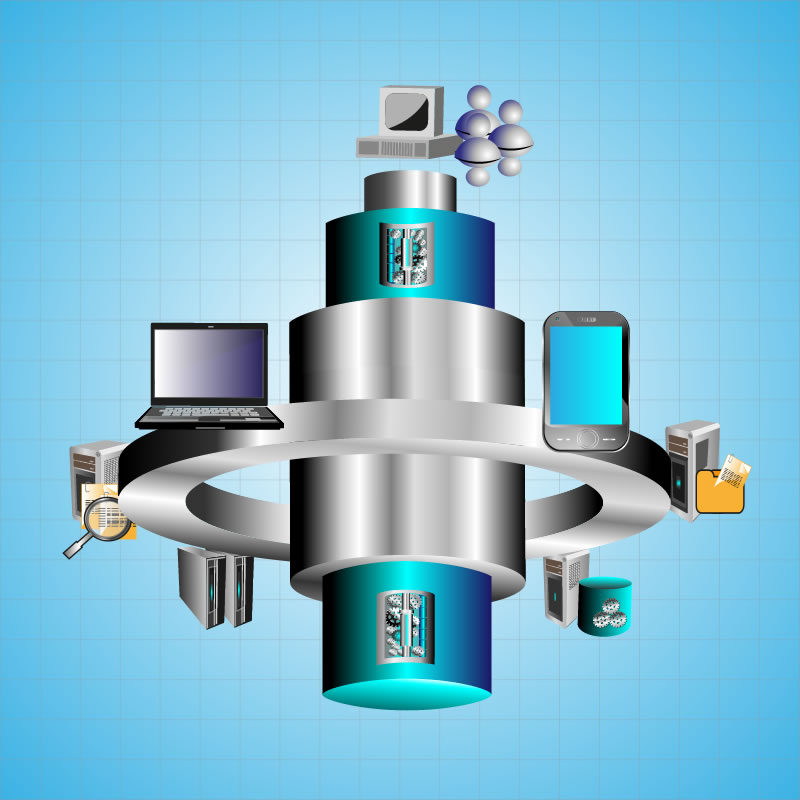博客
主页 » 博客 » KVM Switches vs. Software-Based Remote Access Tools
KVM Switches vs. Software-Based Remote Access Tools
Posted on June 16, 2014 by Gento

Many organizations rely on either enterprise KVM switches or software-based remote access tools to control multiple computer systems, often over geographically dispersed areas. While there may be some overlapping capabilities when it comes to mundane everyday activities such as server routine maintenance, both systems have inherent strengths and weaknesses that are important to assess before committing to one over the other.
First, it’s important to note that there are some real advantages to using software-based remote server management systems. As data center budgets have stagnated or declined over the last five years, managers have sought to cut expenses wherever possible. Many software-based remote access solutions like RDP and VNC are actually free to acquire. And, unlike a KVM switch, there’s no hardware to install or cables to connect. So, there’s no need to power a separate device or maintain records of it in your infrastructure management solution.
The strengths of software-based solutions tend to be the weaknesses of KVM switches. Prices for KVM switches can range from a few hundred for an SMB KVM switch to several thousand for an enterprise KVM-over-IP switch; a price that can increase dramatically if you need to access hundreds or even thousands of servers. Data centers managers must also be sure supply at least two power feeds per device, and must purchase the correct computer interface modules (CIMs) to support their platforms and applications. So one can see how using KVM can be a bit of a hassle in some cases.
However, software-based remote access solutions have some serious downsides that should not be ignored:
- Software must be installed on every computer to be accessed and it will compete for system resources against critical applications.
- Requires a target computer OS and production network to run; which is virtually impossible in an emergency situation.
- There are some huge security risks that by some accounts are responsible for nearly 62% of breaches!
So the bottom line is that while software-based systems are commonly used, inexpensive, and easy to manage, they present vulnerabilities that end up being quite costly in the end; the loss of productivity due to the solution competing for resources with other application, the loss of services due to a lack of BIOS-level access for troubleshooting, and the danger and potential fallout of a security breach.
Now, consider some the upside to KVM switches:
- No software agents are required on the client so there’s no loss of productivity due to competition between applications.
- Out-of-band, BIOS level access for emergency situations, and virtual media (including remote booting).
- They do not use a production network and operate independent of target computer’s OS, so there’s a smaller security risk, plus many adhere to strict protocols such as AES & FIPS 140-2 encryption, Common Access Card (CAC) authentication, and IPv6 networking.
Additionally, it should be noted that many enterprise KVM switches support upwards of 64 servers, and can be configured to work through a centralized server management solution, thus greatly negating the cost factor of KVM switches.
The choice of which remote access solution to use ultimately depends on several factors. The reality is that for smaller organizations with fewer servers, smaller budgets, less critical services, and non-sensitive data, software based solutions may actually be a better way to go. But, for companies with hundreds of servers that require a high performance solution that can be trusted to keep critical services running while ensuring information is safe, the decision to go with a software-based solution may end up being far costlier in the end.
See how other remote access solutions stack up against one another from this insightful eBook, or test drive an enterprise KVM-over-IP switch to see if it’s the right solution for you.
Other Blog Posts
- The cascade effect of data center failure on businesses - why sensors are essential
- Posted on November 5, 2023
- 人工智能的快速发展和使用力登PDU满足更高的电力需求
- Posted on October 11, 2023
- Data Center Report Fewer Outages, But Downtime Still Costly
- Posted on September 20, 2023
- Survey: Energy Usage and Staffing Shortages Challenge Data Centers
- Posted on September 20, 2023
- 力登安全交换机(RSS):安全NIAP 4.0兼容式桌面型KVM
- Posted on September 20, 2023
力登官方微信公众号
力登官方微信公众号

近期活动
- New Zealand Cloud & Datacenter Convention 2022
- 3 November 2022, 9am – 4pm • Grand Millennium Hotel, Auckland, New Zealand
- Data Centre World Singapore
- 12th – 13th Oct 2022
- Korea Cloud & Datacenter Convention 2022
- 6th Oct 2022
- Philippines Cloud & Datacenter Convention 2022
- 4th Aug 2022
- JANOG50 Meeting Hokkaido
- 3th – 15th July 2022
力登最新新闻
- 重振数据中心行业—罗格朗重磅推出两款革命性的智能机架式PDU!
- Posted on May 1, 2023
- 独家专访丨惠州如何升级制造业?法资企业CEO提了个建议
- Posted on December 2, 2021
- 力登公司推出MasterConsole®数字双显示器KVM切换器
- Posted on February 18, 2021
- Legrand Data, Power and Control Division Announced as Finalist in Six Categories at DCS Awards 2020
- Posted on November 9, 2020
- 力登公司(Raritan)推出新型智慧型机架控制器(SRC),用于智能地管理数据中心和关键基础设施中的环境和安全信息
- Posted on November 9, 2020